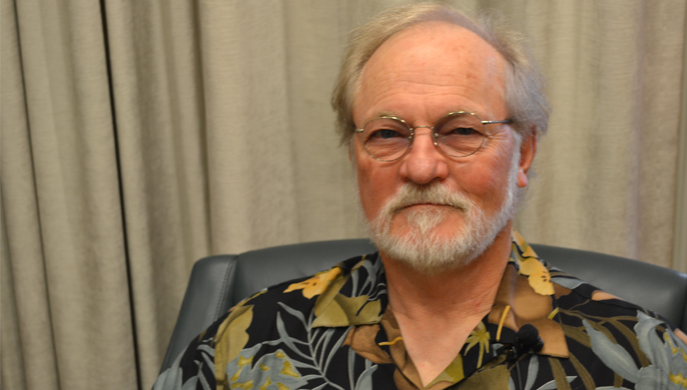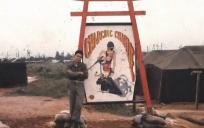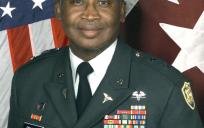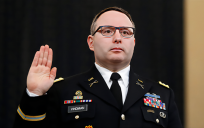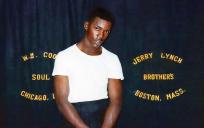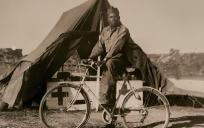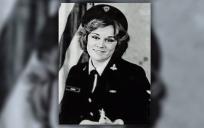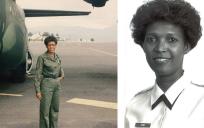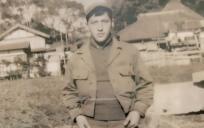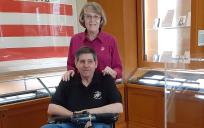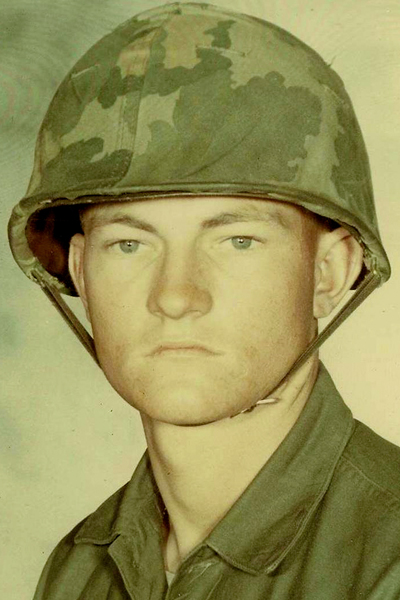
Record date:
Ken Rodgers, E-4
Corporal Ken Rodgers tells of the miserable conditions patrolling in Vietnam, where he served as a part of the Marine Corps’ Bravo Company, and what he witnessed as a part of the 77 day siege on Khe Sanh and retaliatory Payback Patrol—and how that lead him to create a documentary on what others experienced as well.
Ken Rodgers, born 1947, was raised in the small town of Casa Grande, Arizona. He did well in school, was a part of the National Honors Society, was active in sports, the drama club, and had served as Senior Class President, with special love of reading and writing. After high school, Mr. Rodgers briefly attended Arizona State University before leaving to pursue fulltime employment, including a stint on a core drilling rig on the Papago Indian Reservation, south of Casa Grande.
Mr. Rodgers joined the military under somewhat unusual circumstances: he was actually driving a friend that wanted to enlist to Pheonix, only to go across the hall and enlist with the Marine Corps himself for four years. When Mr. Rodgers told his father of his decision, his father was quick to ask: “Don’t you know they’re killin’ people over there?” Mr. Rodgers recalls that perhaps what lead to him enlisting was the desire to find adventure and see what was going on in the world.
Leaving for boot camp on October 4, 1966, Mr. Rodgers trained for 8 weeks at MCRD San Diego in Platoon 3333, and took to heart such sage advice as “Don’t ever let’em learn your name” as a way of dealing with the physically and mentally demanding drills. After boot camp, Mr. Rodgers was sent to Camp San Onofre for Infantry Training—a 4 week program—where he received more weapons training, before he went for two weeks of training at Advanced Infantry Training at Camp Horno. Here he learned small unit tactics, how to conduct ambushes and patrolling. From there he went to staging battalion for 3 weeks—a waiting station for putting together entire units to send to Vietnam all at once. Mr. Rodgers flew from El Toro to Okinawa on his way to Vietnam; and then from Okinawa into Da Nang, Vietnam. He arrived at 2 o’clock in the morning and sat on his seabags for 6 hours awaiting orders, finally assisgned 1st Battalion, 26th Marine Regiment.
1st Battalion, 26th Marines was stationed on Hill 55 about 22 miles southwest of Da Nang. After joining the Battalion, Mr. Rodgers underwent further indoctrination, training and administrative processing before joining Bravo Company – his individual unit. Bravo Company was stationed on the road to Liberty Bridge south of Hill 55. By May of 1967, Mr. Rodgers and the rest of Bravo company was advanced to Khe Sanh, a marine occupied base in the northwest corner of South Vietnam. In June of 1967, a patrol went out and 21 marines were killed in an ambush—an eye opening experience, and a foreshadowing of what was to come for the Company. While nothing happened in the whole area during the fall and winter of 1967, the Company knew the enemy was out there. They had seen signs of them, and the Marine Reconnaissance units had been engaged in smaller skirmishes.
While Mr. Rodgers went on his second R&R around New Year’s day, 1968, the 1st Battalion, 26th Marine Regiment had gone out on patrol with the expectation of activity. 3/26 made contact with the NVA, and there were increased reports of enemy sightings. NVA officers were sighted reconnoitering the base and were shot at. An NVA trooper defected and gave information to US troops. As a result the Marines stationed an entire regiment – 26th Marine Regiment – at Khe Sahn in anticipation of a major engagement. On the morning of January 21st, Mr. Rodgers awoke in his bunker to the sound of someone shouting “Incoming!” Outside the bunker, and in fighting postion, Mr. Rodgers and his fellow Marines witnessed the NVA hit the ammo dump—tear gas and 10’s of thousands of rounds of ammunition cooked off in a scary display. Then came the mortar and artillery fire. From their fox holes, the marines waited, and readied themselves for the ensuing battle. The enemy never came, yet this was the beginning of a siege that last 77 days—the Siege of Khe Sanh.
This oral history interview finds Mr. Rodgers retelling parts of his experiences. Yet, the subject remains a daily part of his life: Mr. Rodgers, and his wife Betty, have spent the last several years researching, interviewing members of Bravo Company, and producing a documentary—BRAVO! COMMON MEN, UNCOMMON VALOR—about the experience of the Marines serving at Khe Sanh. As Mr. Rodgers puts it, the documentary is not about sharing maps and detailed research about tactics, or what General Westmoreland thought; rather it is “about 15 guys and how they survived, and how they feel about it. We don’t care about all that strategy stuff.”
